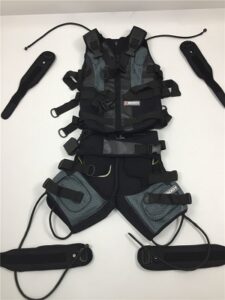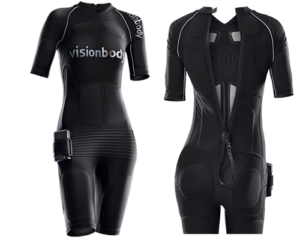Are you intrigued by the potential of Electronic Muscle Stimulation (EMS) to enhance muscle strength? If you’re seeking answers, you’re in the right place. In this article, we’ll delve into the scientific realm of EMS and muscle building to determine its effectiveness and uncover its impact on muscle development, particularly in the context of electronic muscle stimulation workout.
What is Electronic Muscle Stimulation (EMS)?
Electronic Muscle Stimulation involves the application of electrical impulses to intensify muscle contractions. Initially rooted in rehabilitation and physical therapy, EMS has recently gained traction as a method for boosting muscle growth and refining athletic performance.
How Does Electronic Muscle Stimulation (EMS) Work?
EMS dispatches electrical impulses via skin-placed electrodes to stimulate muscles. These impulses mirror brain signals that trigger muscle contractions, resulting in heightened muscle engagement and outcomes. By regulating impulse frequency, intensity, and duration, EMS allows targeted muscle group activation, augmenting strength, endurance, and flexibility.
EMS can be applied to specific muscle groups, often used passively in rehabilitation. Alternatively, it can be employed as comprehensive full-body training, amalgamating electronic muscle stimulation with static or dynamic strength training. This approach enables simultaneous engagement of significant muscle groups, yielding an intense workout without stressing joints. Additionally, it aids in preventing or rectifying muscular imbalances during training, making electronic muscle stimulation workouts a versatile and practical addition to fitness regimens.
How Effective Is EMS in Muscle Building?
A study published in the Journal of Strength and Conditioning Research in 2019 explored the amalgamation of EMS with resistance training. The results showcased that this combination led to superior gains in muscle strength and hypertrophy compared to resistance training in isolation. This combination of EMS and traditional training demonstrated its potency in activating core and back muscles that are harder to target through conventional resistance exercises.
Furthermore, EMS is pivotal in injury prevention and serves as a workout regimen for individuals with physical limitations. The European Journal of Applied Physiology’s findings in 2017 established EMS as an effective tool for enhancing muscle strength and size, particularly among those unable to partake in traditional resistance training due to injuries, illnesses, or constraints. This efficacy emanates from its influence on enhancing neuromuscular control and coordination, culminating in injury prevention and heightened athletic performance.
Numerous studies in professional sports have substantiated EMS’s muscle-building efficacy. For instance, research documented in the Journal of Sports Science and Medicine found that EMS bolstered the maximal strength of professional soccer players. A parallel study involving ice hockey players indicated that EMS enhances muscular strength and skating speed. Notably, increases in knee extensor strength surfaced in both professional ice hockey and basketball players, subsequently elevating their performance levels. Basketball players showcased improved vertical jump performance—a recurring outcome noted across a spectrum of studies confirming the positive impact of brief EMS sessions on muscle strength and athletes’ specific abilities.
In this specialized domain, many studies reinforce the efficacy of electronic muscle stimulation in strength training. These findings consistently converge on a shared conclusion: EMS exhibits a constructive influence on muscle building, particularly when fused with conventional resistance training.
Conclusion
Electronic Muscle Stimulation (EMS) is a dynamic approach to enhancing muscle strength and development. Its fusion with traditional resistance training showcases promising results, particularly in augmenting muscle growth and addressing muscular imbalances. With an increasing body of evidence supporting its efficacy, EMS emerges as a potent tool in the arsenal of athletes and fitness enthusiasts seeking to maximize muscle gains, especially when it comes to electronic muscle stimulation workout.
FAQs
Q: Can EMS replace traditional resistance training entirely?
A: While EMS offers unique benefits, it is most effective when used with traditional resistance training. The combination can yield superior muscle-building results.
Q: Is EMS suitable for beginners or only for advanced fitness enthusiasts?
A: EMS is versatile and can be tailored to various fitness levels. However, beginners should consult a fitness professional before incorporating EMS into their routine.
Q: What areas of the body can EMS effectively target?
A: EMS can strategically target various muscle groups, including the core, back, legs, and arms.
Q: Are there any age restrictions or health concerns associated with EMS?
A: While EMS is generally safe, individuals with certain medical conditions or health concerns should consult a healthcare provider before using EMS devices.
Q: How soon can I expect noticeable results from EMS workouts?
A: Results may vary, but many individuals report increased muscle engagement and improved muscle tone after just a few sessions of EMS workouts.











